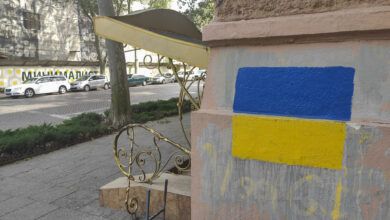Amid smaller turnout, Peruvian protesters change their approach
Cuzco, Peru, Jan 6 (EFE).- People in southern Peru taking part in protests to demand the resignation of accidental President Dina Boluarte and a new constitution for the Andean nation have expanded their agenda to include calls for aid to small farmers and a fairer distribution of wealth.
Last month, confrontations between security forces and opponents of the ouster of elected head of state Pedro Castillo resulted in 28 deaths, 22 of them attributable to shots fired by police and soldiers.
Most of the fatalities followed the transitional government’s imposition of a state of emergency entailing the suspension of some constitutional rights.
Mobilizations resumed this week after a Christmas-New Year’s truce, but on a much smaller scale.
Activists here in the south are pursuing a new strategy that involves deploying relatively small contingents of demonstrators at more than 30 different points on highways in the provinces of Cuzco and Puno, bordering Bolivia.
Traveling down the main road linking the two neighboring provinces, EFE saw groups ranging from several dozen to just over a hundred.
The demonstrators continue to demand that Boluarte and Congress step down in favor of early general elections, as well as a constitutional convention to draft a replacement for the charter enacted in 1993 under President Alberto Fujimori, who is now serving life in prison for massacres and embezzlement during his 10 years in power.
But they are also airing more general grievances, such as Peru’s persistent inequality and the centralization of power in Lima.
“The reason for the strike is the extreme poverty that exists,” protester Marcos Villaroel, 69, tells EFE in Huaro, some 50 km (30 mi) from Cuzco city, the gateway to the Inca citadel of Machu Picchu, Peru’s leading tourist attraction.
“Peru is rich in everything: mining, gas, tourism and most of all, Cuzco represents tourism, but Lima takes the entire budget and practically nothing comes for Cuzco,” he says.
Complaints that the Lima metropolitan area, home to nearly a third of Peru’s 33 million people, monopolizes the nation’s wealth are common among residents of other parts of the country.
“This Congress has forgotten (about us),” another demonstrator says, going on to criticize the rightist-dominated body for its persistent attempts to impeach Castillo, culminating in the successful vote to remove him on Dec. 7, hours after he announced the dissolution of the legislature and elections for a constitutional convention.
While some of those at the roadblocks in the south identify themselves as Castillo supporters, the ex-president’s release from custody is not among the four “official” demands: Boluarte’s resignation; the closure of Congress; elections this year; and a new constitution. EFE am-gdl/dr





